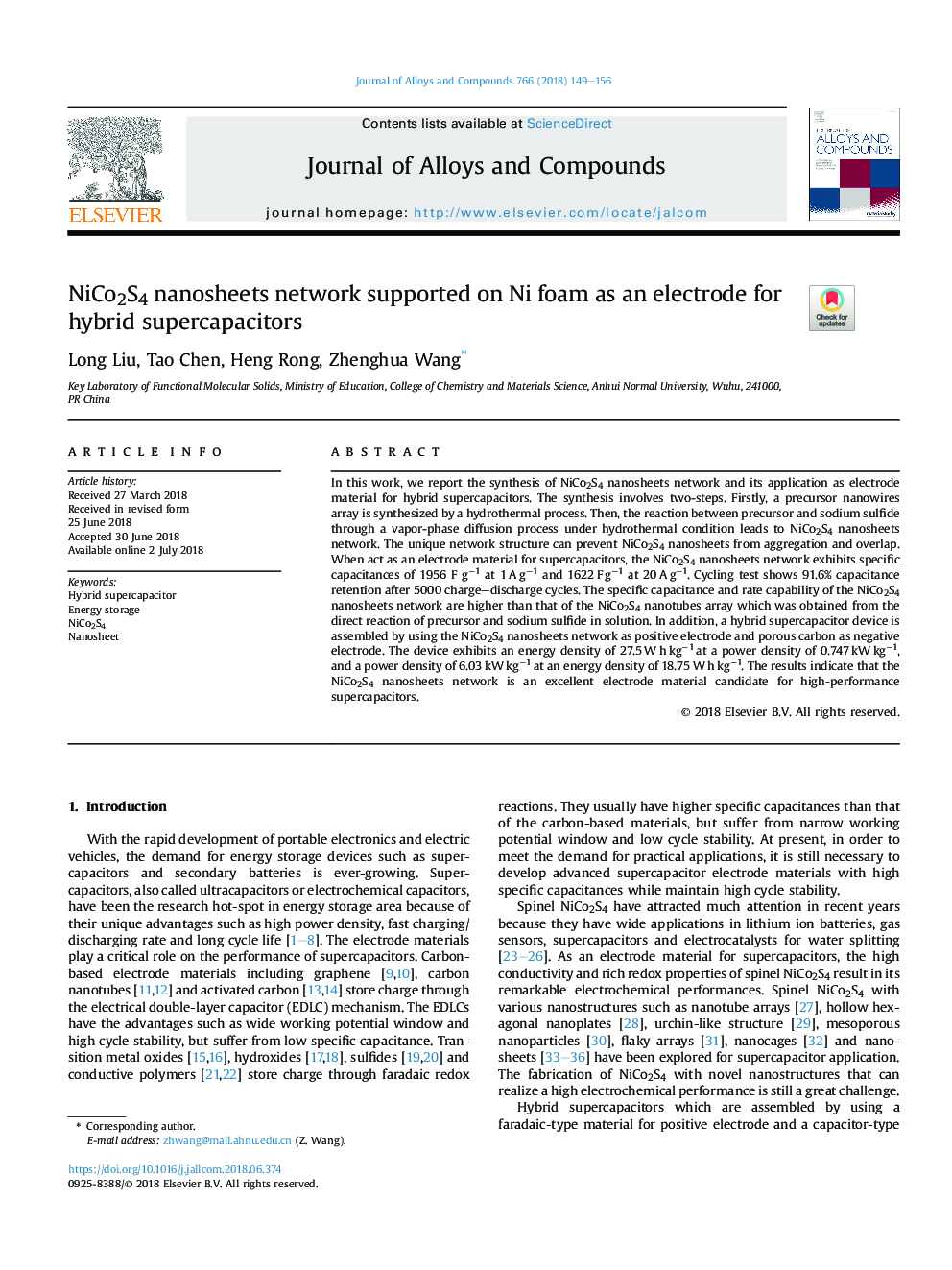| Article ID | Journal | Published Year | Pages | File Type |
|---|---|---|---|---|
| 7990344 | Journal of Alloys and Compounds | 2018 | 8 Pages |
Abstract
In this work, we report the synthesis of NiCo2S4 nanosheets network and its application as electrode material for hybrid supercapacitors. The synthesis involves two-steps. Firstly, a precursor nanowires array is synthesized by a hydrothermal process. Then, the reaction between precursor and sodium sulfide through a vapor-phase diffusion process under hydrothermal condition leads to NiCo2S4 nanosheets network. The unique network structure can prevent NiCo2S4 nanosheets from aggregation and overlap. When act as an electrode material for supercapacitors, the NiCo2S4 nanosheets network exhibits specific capacitances of 1956 F gâ1 at 1â¯Aâ¯gâ1 and 1622â¯Fâ¯gâ1 at 20â¯Aâ¯gâ1. Cycling test shows 91.6% capacitance retention after 5000 charge-discharge cycles. The specific capacitance and rate capability of the NiCo2S4 nanosheets network are higher than that of the NiCo2S4 nanotubes array which was obtained from the direct reaction of precursor and sodium sulfide in solution. In addition, a hybrid supercapacitor device is assembled by using the NiCo2S4 nanosheets network as positive electrode and porous carbon as negative electrode. The device exhibits an energy density of 27.5â¯Wâ¯hâ¯kgâ1â¯at a power density of 0.747â¯kWâ¯kgâ1, and a power density of 6.03â¯kWâ¯kgâ1â¯at an energy density of 18.75â¯Wâ¯hâ¯kgâ1. The results indicate that the NiCo2S4 nanosheets network is an excellent electrode material candidate for high-performance supercapacitors.
Related Topics
Physical Sciences and Engineering
Materials Science
Metals and Alloys
Authors
Long Liu, Tao Chen, Heng Rong, Zhenghua Wang,
